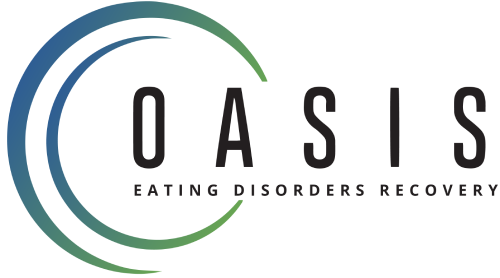Costs of Treatment: How Much Does Eating Disorder Treatment Cost?
Seeking help for an eating disorder can feel overwhelming—not only emotionally, but financially. At Oasis Eating Recovery, we understand that the cost of eating disorder treatment in California is a major concern for individuals and families considering care. This guide is designed to help you understand what influences treatment costs, what insurance coverage may look like, and what payment options are available for those without insurance.
While Oasis Eating Recovery does not offer inpatient treatment or residential care, we can help you understand what those options typically cost if you’re considering them elsewhere—our programs primarily focus on outpatient levels of care, including partial hospitalization (PHP) and intensive outpatient (IOP) treatment.
Understanding the Cost of Eating Disorder Treatment
Eating disorder treatment can vary significantly in cost depending on several factors, including insurance , and the level of care required. Whether you’re struggling with anorexia nervosa, bulimia nervosa, or binge eating disorder, the treatment process often involves a combination of psychotherapy, nutritional counseling, and ongoing medical support.
Because eating disorders are complex mental health conditions that affect both physical and emotional health, care typically requires a multidisciplinary treatment plan. Costs can range based on:
- The level of care (inpatient, outpatient, or partial hospitalization)
- The frequency and duration of treatment programs
- Whether the facility accepts private insurance or is out-of-network
- The inclusion of additional services, such as dietitians, psychiatrists, or medication management
- The need for follow-up care after discharge
While costs can vary widely, it’s important to remember that early intervention often leads to shorter stays and lower long-term expenses—both financial and emotional.
Average Cost by Level of Care
The cost of eating disorder treatment depends heavily on the intensity of care provided. Treatment may range from short-term outpatient programs to long-term residential care or inpatient treatment for medically unstable patients.
Here’s an overview of what to expect across the levels of care:
Inpatient Treatment / Residential Care
For individuals in medical or psychiatric crisis—such as those with anorexia nervosa and dangerously low weight, or severe bulimia nervosa involving laxatives and excessive exercise—inpatient care or residential treatment may be necessary.
- Average daily cost: 300–1,000 per day without insurance
- Length of stay: 30–90 days on average
- Includes 24-hour medical monitoring, structured meal support, and full access to a multidisciplinary treatment team
While this may sound costly, many insurance companies will cover a significant portion—or all—of these services when medical necessity is established.
Partial Hospitalization (PHP)
A partial hospitalization program offers structured, daytime treatment that includes therapy, meal planning, and medical supervision. Clients return home at night.
- Average cost: $500–$1,200 per day without insurance
- Typical schedule: 5–6 days per week
- Often covered by health insurance with copayments or deductible costs
PHP is ideal for patients transitioning out of inpatient care or those who need intensive support without a full hospital stay.
Intensive Outpatient Treatment (IOP)
Intensive outpatient treatment allows patients to maintain work or school responsibilities while receiving several hours of therapy, nutritional counseling, and group sessions multiple times per week.
- Average cost: $150–$200 per day out-of-pocket
- May last 4–8 weeks, depending on the treatment plan
- Includes in-person or telehealth options
Many clients use IOP as a step-down from PHP or as ongoing support after completing residential treatment.
Outpatient Treatment
For individuals with stable eating behaviors and strong support networks, standard outpatient programs provide flexible care through weekly or biweekly sessions.
- Average cost: $100–$300 per session for therapy or nutrition counseling
- Often billed per session under standard mental health coverage
- Can be supplemented with support groups, Project HEAL, or community-based nonprofit resources
Does Insurance Cover Eating Disorder Treatment?
Most health insurance plans cover eating disorder treatment, though coverage can vary based on your provider, policy type, and diagnosis. The Affordable Care Act (ACA) requires insurers to provide mental health and substance use disorder benefits equivalent to those offered for physical healthcare.
Private Insurance Coverage
If you have private insurance, your plan may cover inpatient stays, partial hospitalization, and outpatient treatment. Coverage often depends on medical necessity, which is determined through a formal evaluation by a healthcare provider or your treatment team.
- PPO plans: These plans generally allow you to go out of network, but you may face higher deductibles and copayments.
- HMO / EPO plans: These restrict you to in-network providers. However, if your network lacks a specialized program, your treatment team may request a single-case agreement, allowing temporary coverage for out-of-network treatment based on medical necessity.
Medicare and Medicaid
For those covered by Medicare, certain levels of inpatient hospital or outpatient treatment for eating disorders may be reimbursed if deemed medically necessary. Medicaid programs also provide coverage in some states, particularly for adolescents or individuals with severe mental health conditions.
Because every plan is different, it’s essential to verify benefits before admission. Most facilities, including Oasis Eating Recovery, can assist with insurance verification and coordinate reimbursement on your behalf.
Paying Out of Pocket: What to Expect
Not everyone has health insurance, and even with coverage, some clients prefer to pay out-of-pocket for privacy or flexibility. At Oasis Eating Recovery, out-of-pocket rates for structured outpatient or intensive outpatient treatment average $150–$200 per day, depending on services and frequency.
Payment plans can often be arranged to make treatment more accessible. Financial coordinators will walk you through available treatment options and set up manageable monthly payments.
For individuals unable to afford care, financial assistance programs or nonprofit organizations such as Project HEAL may help cover part of the cost of eating disorder treatment.
Factors That Influence Treatment Costs
While the type of insurance plays a large role, several other factors determine how much eating disorder treatment will cost:
- Type of Eating Disorder: Anorexia nervosa and bulimia nervosa often require more medical monitoring than binge eating disorder, which may be treated primarily through therapy and nutrition sessions.
- Length of Stay: Longer treatment durations naturally cost more but may reduce relapse and hospital readmissions later.
- Therapies Included: Specialized care such as cognitive behavioral therapy (CBT), nutritional counseling, and psychotherapy affect total costs.
- Location: Facilities in large cities may charge more due to higher operational costs, while regional centers like Fresno may offer more affordable pricing.
- Follow-up Care: Continued therapy and weight management support after discharge can add to the total cost but are essential for maintaining recovery.
Why Treatment Is Worth the Investment
The cost of eating disorder treatment can be intimidating, but untreated eating disorders often lead to severe physical health complications and even hospitalization. For example:
- Anorexia nervosa has one of the highest mortality rates of any mental disorder.
- Bulimia nervosa can cause dangerous electrolyte imbalances and cardiac issues.
- Binge eating disorder increases risk for diabetes, hypertension, and depression.
The earlier professional help is sought, the better the outcome—emotionally, physically, and financially. Investing in recovery means investing in a lifetime of well-being, stability, and self-acceptance.
Ways to Reduce Costs
There are several strategies to make eating disorder treatment more affordable without compromising quality of care:
- Verify insurance benefits early. Ask your provider about covered services, copays, and out-of-network reimbursement options.
- Request a single-case agreement. If your insurance doesn’t cover specialized treatment, your clinician may help you apply for one.
- Apply for financial aid. Programs like Project HEAL and NEDA (National Eating Disorders Association) connect patients with funding resources.
- Use telehealth services. Many outpatient programs now offer virtual therapy sessions, reducing transportation and lodging costs.
- Seek nonprofit options. Some nonprofit clinics and hospitals offer sliding-scale payment systems based on income.
Even small steps—like attending support groups or participating in community-based interventions—can provide structure and emotional support while formal treatment is arranged.
Affordable, High-Quality Care at Oasis Eating Recovery
At Oasis Eating Recovery in California, we believe everyone deserves access to effective, compassionate care—regardless of their financial situation. We work closely with health insurance providers, Medicare, and private pay clients to ensure transparency about all costs before admission.
Our goal is to make recovery attainable for every person facing an eating disorder. With a range of treatment programs—including partial hospitalization and outpatient care—we tailor every plan to the client’s type of eating disorder, emotional needs, and budget. Contact us today to learn more.

